G7 or the Group of Seven is an organization of the world’s seven largest so-called “advanced” economies, which dominate global trade and the international financial system. Comprising Germany, France, Italy, United Kingdom, Japan, Canada and of course, the United States of America, the G7 used to be G8 when Russia joined the club in 1998.
However, the G8 became G7 after Russia was expelled after Moscow’s annexation of Ukraine’s Crimea in 2014. Despite being the world’s second largest economy, China has never been a member of the world’s richest nations club. Chances are the Chinese will never get invited to the exclusive club, largely because China has no intention to play second fiddle to the U.S.
This year, the 48th G7 summit is being held from 26 to 28 June 2022 in Schloss Elmau, Krün, Bavarian Alps, Germany. The top agenda was the Ukraine War and the G7 leaders have decided on new steps to further isolate Russia’s economy, including a ban on new imports of Russian gold. The G7 has also pledged to continue supporting Ukraine for “as long as it takes”.
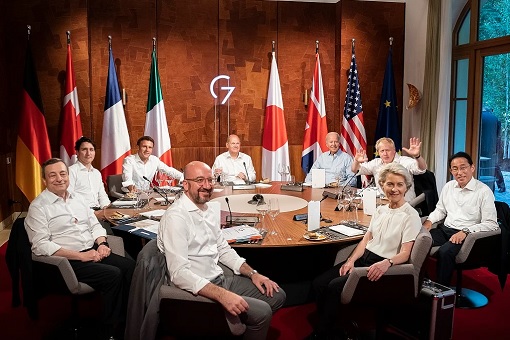
However, whether the G7 can remain united against Russia is a huge question mark. While Joe Biden tries to prolong the Ukraine conflict so that he can divert attention from his record low approval rating, the U.S. president at the same time fears that prolonging the conflict could inflict more damage to the rising cost of energy and global food shortages, leading to recession.
But the most important agenda, as far as the U.S. is concerned, was how to counter China’s powerful infrastructure investments in the developing world that have extended Beijing’s influence across the globe. Washington was not impressed that some previously pro-U.S. countries have started showing disobedience, so much so they have openly supported Russia and China.
To counter China’s BRI (Belt and Road Initiative) project, the leaders of G7 have promised to raise US$600 billion over 5 years to finance infrastructure in developing countries. Biden said – “Developing countries often lack the essential infrastructure to help navigate global shocks, like a pandemic, so they feel the impacts more acutely and they have a harder time recovering.”
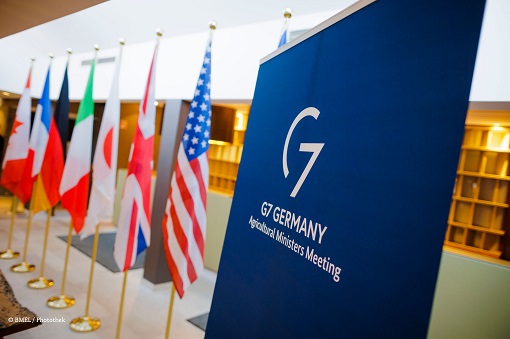
However, it’s old wine in a new bottle. Joe Biden and other G7 leaders have merely “relaunched” the newly renamed “Partnership for Global Infrastructure and Investment” (PGII). As it turned out, the plan was a scale-down of “Build Back Better World” (B3W), an economic initiative supposedly worth US$40 trillion announced by Biden last year prior to G7 summit in June 2021.
Last year, Biden proudly announced the US$40 trillion B3W, a scheme designed to provide an alternative to China’s BRI for the infrastructure development of low-and-middle-income countries. Amusingly, nothing happened since then. Now, humiliated by the empty rhetoric of B3W, the same U.S. president tries to repackage it as PGII – slashing it to just US$600 billion.
It’s both laughable and embarrassing that the world’s seven richest nations had to shrink the project from US$40 trillion down to US$600 billion. That’s just 1.5% of the boastful US$40 trillion program. Sleepy Joe said the U.S. would mobilise US$200 billion, while the European Union would source 300 billion Euros (US$317 billion), leaving the rest of G7 members to shoulder the remaining US$100 billion.
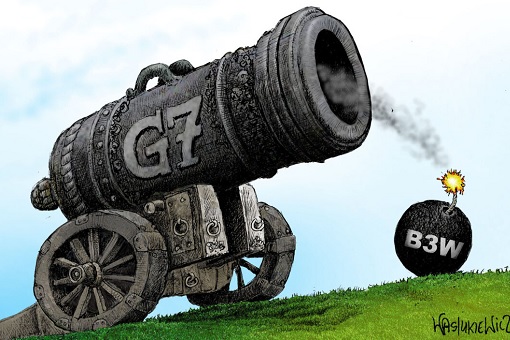
What happens to the original US$40 trillion “Build Back Better World” program to rival China’s Belt and Road Initiative? Clearly, the U.S. president had plucked the numbers from the sky last year, blowing his own horn without the actual financial ability to deliver it. If the leaders of the G7 could lie last year, what is there to stop them from lying again this time?
In the same breath, the European Union too announced the €300 billion Global Gateway in December 2021 to compete with China’s BRI. Is the program dead and the PGII is actually its replacement? The Global Gateway also talked about new connectivity strategies to create smart, sustainable and secure links with countries around the world in the areas of digital, energy and transport.
Among some flagship projects in the PGII includes a US$2 billion solar development project in Angola with support from the Commerce Department, the U.S. Export-Import Bank, US firm AfricaGlobal Schaffer, and U.S. project developer Sun Africa. Technical assistance worth US$3.3 million will go to Institut Pasteur de Dakar in Senegal to develop vaccines.
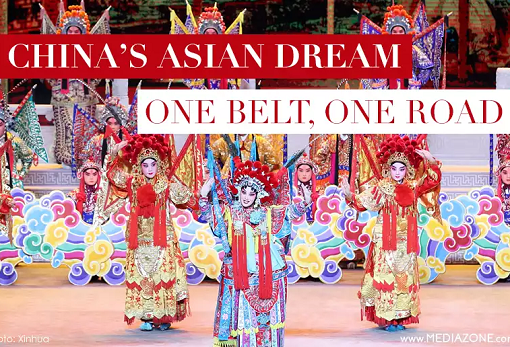
But the key word here is that the White House “aims to mobilize US$600 billion” by 2027 in global infrastructure investments. In comparison, China’s BRI had already exceeded US$4 trillion in investment in the first quarter of 2020, according to data provider Refinitiv. And since the inauguration of the BRI in 2013, it has expanded to more than 100 countries.
Not only the “belt” has crossed the Eurasian supercontinent and the “road” has crossed the Indian Ocean up to Europe via the Suez Canal, the President Xi Jinping’s signature foreign policy has stretched into the Arctic, cyberspace, and even outer space. Yes, the Wall Street Journal admits that China’s dream of building a 21st-century Silk Road has gone into space.
BeiDou Navigation Satellite System , China’s answer to the U.S.-owned GPS navigation system, is one of the elements of the BRI where people from East Africa to the South Pacific has access to the Chinese Beidou-2 satellite network. Essentially, the satellites provide the digital glue for the roads, railways, ports and industrial parks to countries along the “One Belt, One Road” vision.
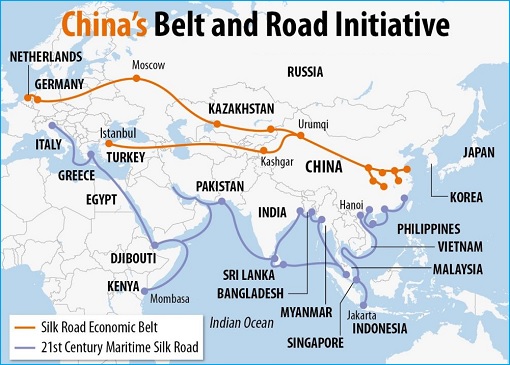
But the Chinese BRI is a “debt traps” scheme, warned the West. Biden administration has claimed that the newly repackaged PGII offers an alternative infrastructure scheme. The U.S. talks as if the US$600 billion project from the West is giving away free cash with no strings attached. If you believe there’s such thing as a free lunch, then you should also believe that Biden is still a virgin.
When Biden announced the US$600 billion PGII, he made it clear – “This isn’t aid or charity. It’s an investment that will deliver returns for everyone, including the American people and the people of all our nations”. Obviously, the G7 rich nations, especially the U.S., expect good ROI (return on investment) from the projects that would eventually be awarded to American banks, companies and contractors.
The PGII will involve public and private loans to developing world desperate for projects, the same way how China’s BRI provides loans for development projects. So, how is the Chinese BRI any different from G7’s PGII? The fact that it has taken the Western economies 10 years to come up with a program to compete with the BRI shows the West wasn’t interested to help developing countries in the first place.
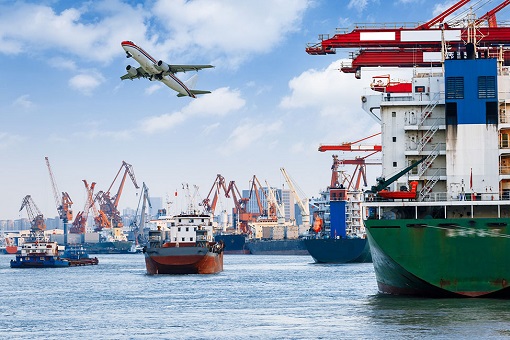
The U.S. knew that the BRI was an extremely risky business, hence chose to wait and see, betting that the Chinese project would fail. But when China succeeded in signing more than 170 BRI cooperation agreements with 125 countries and 29 international organizations across Asia and Europe, as well as Africa, Latin America and the South Pacific, the U.S. had no choice but to join the bandwagon.
Critics claimed many countries that partnered with China in the BRI had regretted, accusing Beijing of being more interested in establishing economic and geostrategic footholds than benefiting locals. But isn’t G7’s PGII also about geopolitical interest of the U.S. and its allies? Are you saying the PGII isn’t a debt trap and the Western nations will gladly write off all the toxic loans from countries that cannot repay?
Beijing has never pointed a gun and forces any country to participate in the BRI project. Take for example the East Coast Rail Link (ECRL), a key part of China’s Belt and Road Initiative in Malaysia. President Xi Jingping did not threaten or force (former) Malaysia Prime Minister Najib Razak to approve the overpriced RM65.5 billion ECRL project, or the RM140 billion “Bandar Malaysia” project.
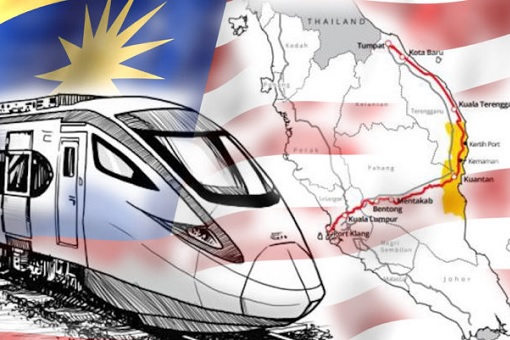
Instead, it was the crooked Najib who travelled frequently to China, begging and sucking up to President Xi for the projects so that the Malaysian leader could received kickbacks to bail out his 1MDB scandal. It was only after opposition Pakatan Harapan came to power in 2018 that the costs of the controversial ECRL project was negotiated, reducing the RM65.5 billion project by RM21.5 billion or one-third (30%).
Worse, Mr Najib had signed a deal with hidden RM21.78 billion termination penalties, on top of a bloated price tag of RM65.5 billion. It was not China’s fault that “debt traps” happened in the ECRL project due to Najib’s corruption. It was the moron Najib who signed the deal with full knowledge of the unfair termination penalty clause – deliberately included in the agreement to prevent the project from being cancelled.
Unlike BRI, the Group of Seven PGII projects are only limited to four pillars, designed to fight the Chinese BRI. First, the US$600 billion is for projects that tackle climate crisis. Second, the projects will focus on boosting ICT (digital information and communications technology) network technologies such as 5G connectivity and cybersecurity – obviously to compete with Huawei.
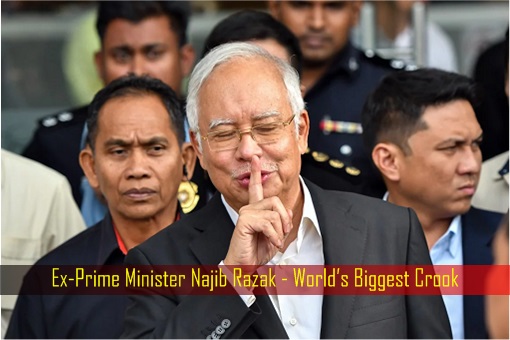
Third, the PGII project aims to advance gender equality and equity – suggesting that countries with poor human rights record will be disqualified. Lastly, the focus is to build and upgrade global health infrastructure. Meaning low-income countries require development of transport such as roads and ports, finance, space, tourism, education, culture and others might not be able to get PGII funding.
The West had never been generous. Last month, after the ASEAN leaders took the trouble to fly all the way to Washington to meet with Biden, the president pledged only US$150 million to be shared among 10 countries in the region – Brunei, Cambodia, Indonesia, Laos, Malaysia, Myanmar, Singapore, Thailand Vietnam and the Philippines. It was an insult because China had pledged US$1.5 billion.
Still, whether the U.S. could mobilise US$200 billion through grants, federal funds and private investment for the PGII is still unknown. Likewise, the Europe has not made clear how it plans to raise the US$300 billion. It does not make sense that the U.S. would splash the money in foreign countries when the US$200 billion could be better used to improve and modernise its own deplorable infrastructure.
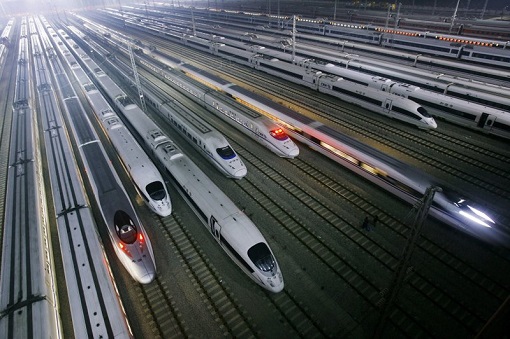
China has over 40,000 kilometres of high-speed rail (HSR) – the world’s longest and most extensive. America does not even have true high-speed trains, aside from sections of Amtrak’s Acela line that can reach 150 mph for only 34 miles of its 457-mile span. Its average speed between New York and Boston is only about 65 mph (104 kph).
The U.S. has very little track record of helping other countries in infrastructure development. Heck, how could they help others when it can’t even help itself, not to mention the challenge in getting Congress approval to spend US$200 billion in foreign countries? Believes it only when you see the money – without strings attached.
Other Articles That May Interest You …
- Trapped In RM80 Billion Subsidy – A Result Of “Ketuanan Melayu” Racist Policy, Corruption & Nepotism
- Too Little Too Late – Bank Negara Raises Interest Rate To Rescue Tumbling Ringgit Under Pretext Of Fighting Inflation
- Ringgit Hits 2-Year Low Of 4.36 Despite High Oil Price – How UMNO Leaders Destroy The Currency In The Last 25 Years
- 7 New Taxes That Najib & UMNO Plan To Introduce After They Win The 15th General Election
- Food Prices Skyrocket – The Return Of Monopoly & Cartel Run By Rich UMNO Malay Elites To Profit From The People
- From 30% To 51% Shares – Endless Racist Policies & Daylight Robberies Why Local Talents & Companies Fled Elsewhere
- Congrats Muhyiddin! – Here Are The Letters From German, Japanese And Dutch Investors Threatening To Pull Out
- Get Ready For Bad Time Ahead! – As Malaysia’s Economy & Corporate Debt Get Worse, Retrenchment Has Just Begun
- Don’t Blame China Or Mahathir – Moron Najib Signed The ECRL Deal Hidden With RM22 Billion Penalty
- How Najib Almost Got Away With RM21.5 Billion, Until Mahathir Govt Negotiated A New Brilliant ECRL Deal With China
- The Dragon Has Landed – China Kick-Off Defence Triangle Via ECRL Malaysia

|
|
June 29th, 2022 by financetwitter
|


|

|

|

|

|

|




























Comments
Add your comment now.
Leave a Reply